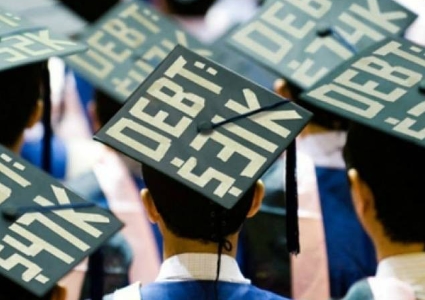Polling

Suggest an important issue not listed in this sub-category (). (Maximum 60 Characters)
Student loan debt

Education advocates say a college education is important because the income gap is widening between those with a college degree and those without one. Over a lifetime, a college graduate can now expect to earn about 75% more than a person without a degree. However, between 2000 and 2020, the average tuition and fees at public four-year institutions have increased 78%. For the 2022-2023 academic year, the average price of tuition and fees were $39,400 at private colleges, $10,940 at public in-state colleges, and $28,240 at public out-of-state colleges. Low-income students continue to fall behind in their ability to access higher education because the availability of federal aid often determines whether many students can attend college. About 72% of all college undergrads now need some form of financial aid.
The Department of Education distributes and manages the Pell Grant and Stafford loan programs. A Pell Grant is usually "free money" that does not need to be repaid, except if one drops out, changes their enrollment status, or receives other financial aid. In for 2023-24, the maximum Pell Grant award was $7,395, and Stafford loans allow eligible students to borrow up to $20,500 annually. For loans taken out for the 2022 - 2023 school year, undergraduates receive a 4.99% interest rate and graduate students receive a 6.54% interest rate. Payments for a $70,000 college loan under the standard 10-year repayment plan with a 6.22% interest rate, would require a monthly payment of $785, and a total repayment cost of $94,188.
There are 43.5 million Americans trying to pay off student loans, and total student loan debt is now $1.76 trillion. Servicing this debt is difficult for grads with lower-paying public service careers, those who are ill or unemployed, or those who failed to complete their degree. The typical amount of a student’s debt is now about $37,600 and their average monthly payment is about $400. Advocates say many young Americans are unable to buy a car, a home, or start a family due to student loan costs. Critics claim it will increase inflation, doesn’t help low-income people who never attended college, is unfair to people who already paid off their student debt, doesn't address the high cost of college, and could be struck down by courts.
Executive actions by President Biden have authorized the cancellation of $153 billion in student loan debt for nearly 4.3 million people, or about 9% of all outstanding federal student loan debt.
Proposed Legislation: Reintroduction of H.R.4797 - Student Loan Relief Act (117th Congress 2021-2022)
Prospective Sponsor: Rep. Troy Carter (LA)
The Department of Education distributes and manages the Pell Grant and Stafford loan programs. A Pell Grant is usually "free money" that does not need to be repaid, except if one drops out, changes their enrollment status, or receives other financial aid. In for 2023-24, the maximum Pell Grant award was $7,395, and Stafford loans allow eligible students to borrow up to $20,500 annually. For loans taken out for the 2022 - 2023 school year, undergraduates receive a 4.99% interest rate and graduate students receive a 6.54% interest rate. Payments for a $70,000 college loan under the standard 10-year repayment plan with a 6.22% interest rate, would require a monthly payment of $785, and a total repayment cost of $94,188.
There are 43.5 million Americans trying to pay off student loans, and total student loan debt is now $1.76 trillion. Servicing this debt is difficult for grads with lower-paying public service careers, those who are ill or unemployed, or those who failed to complete their degree. The typical amount of a student’s debt is now about $37,600 and their average monthly payment is about $400. Advocates say many young Americans are unable to buy a car, a home, or start a family due to student loan costs. Critics claim it will increase inflation, doesn’t help low-income people who never attended college, is unfair to people who already paid off their student debt, doesn't address the high cost of college, and could be struck down by courts.
Executive actions by President Biden have authorized the cancellation of $153 billion in student loan debt for nearly 4.3 million people, or about 9% of all outstanding federal student loan debt.
Proposed Legislation: Reintroduction of H.R.4797 - Student Loan Relief Act (117th Congress 2021-2022)
Prospective Sponsor: Rep. Troy Carter (LA)
Poll Opening Date
December 30, 2024
Poll Closing Date
January 5, 2025
Democracy Rules respects the privacy of your information.
See PRIVACY STATEMENT
See PRIVACY STATEMENT